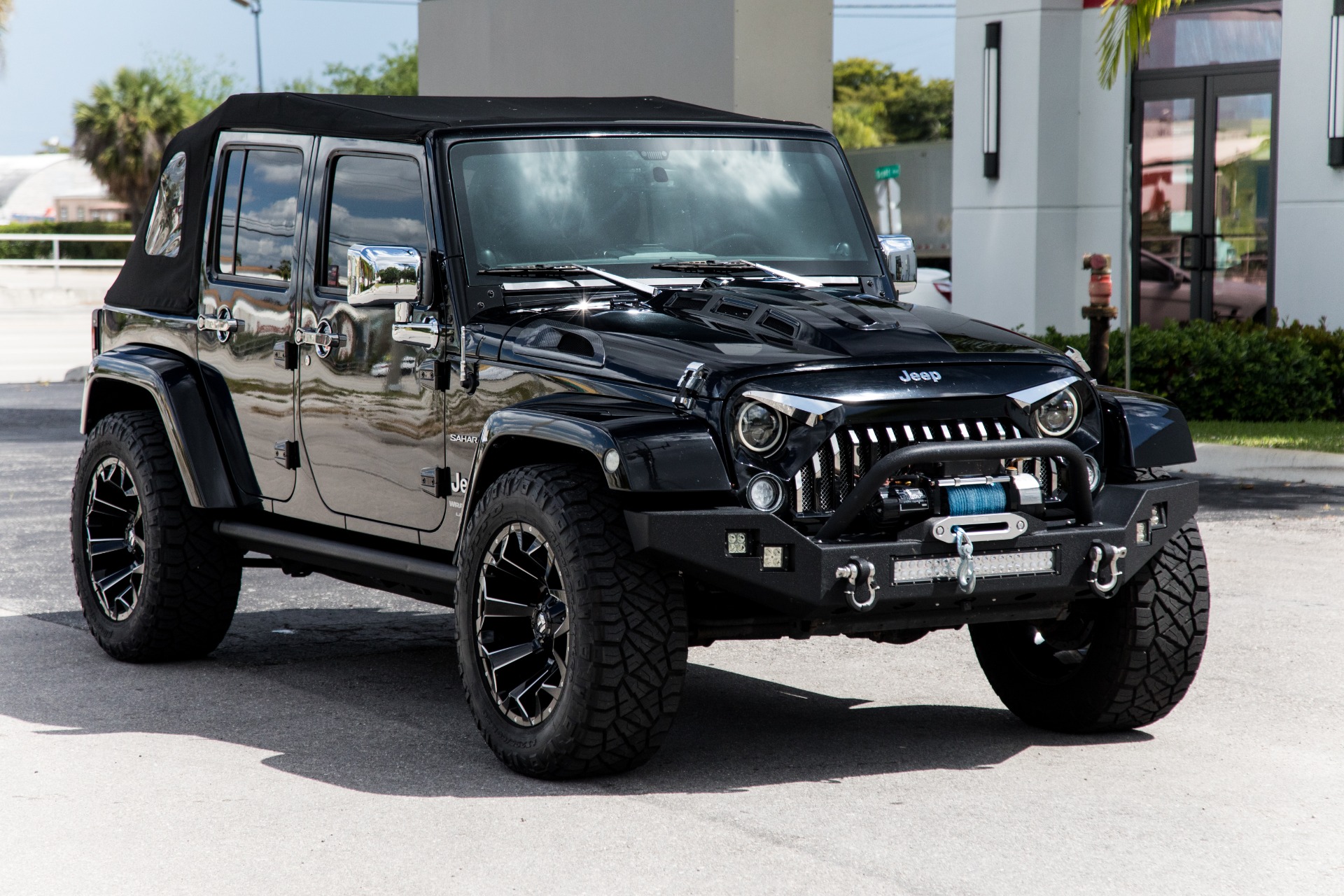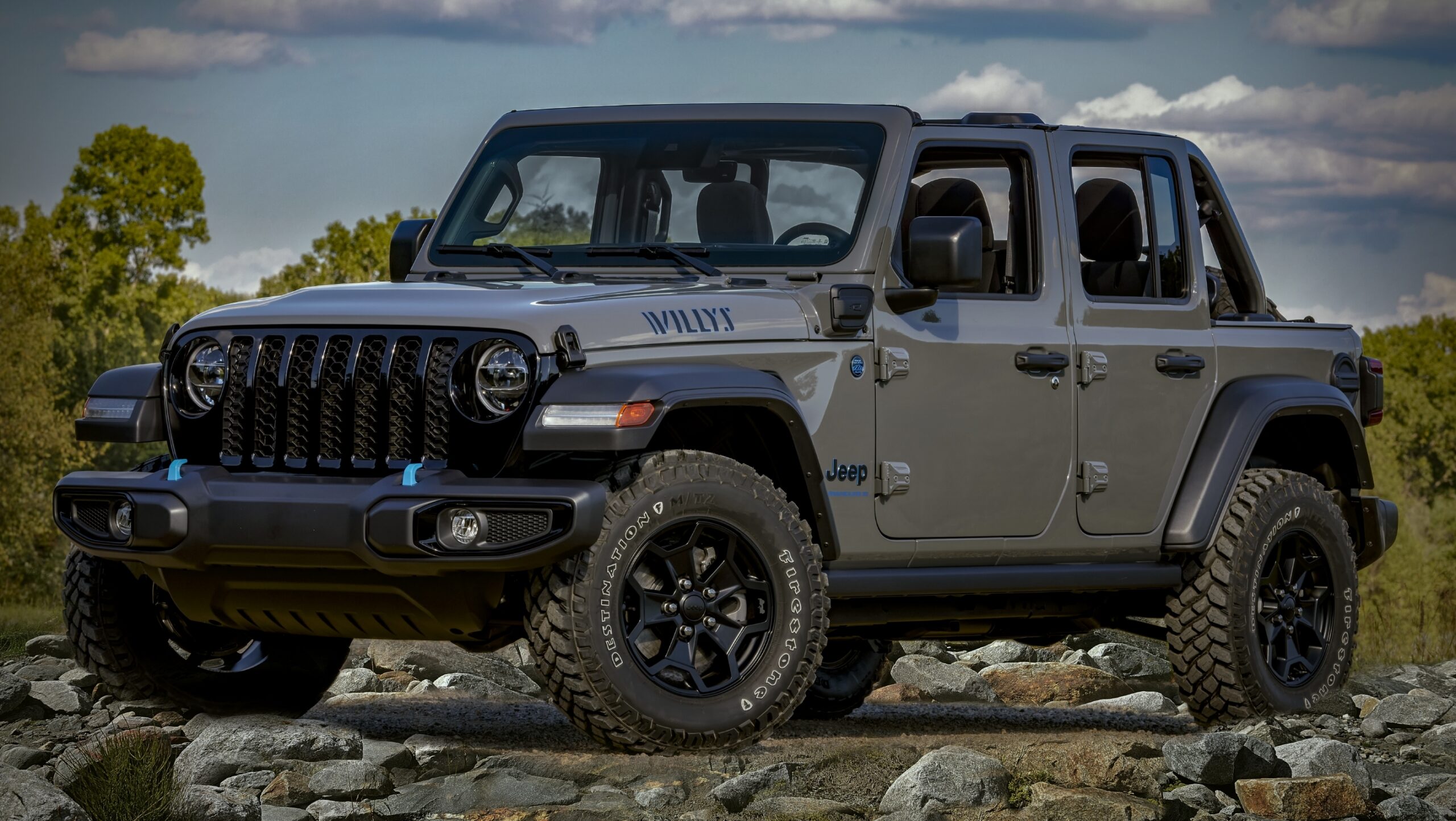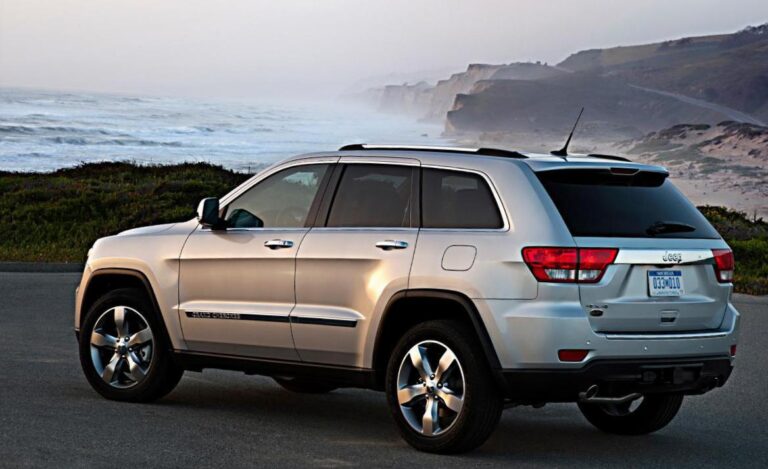Wrangler Jeep Engine: The Heartbeat of Off-Road Legend
Wrangler Jeep Engine: The Heartbeat of Off-Road Legend jeeps.truckstrend.com
The Jeep Wrangler is more than just a vehicle; it’s an icon of freedom, adventure, and unparalleled off-road capability. At the core of this legendary machine lies its engine – a vital component that dictates everything from its rock-crawling prowess to its highway cruising efficiency. Far from being a single entity, the "Wrangler Jeep Engine" refers to a diverse lineage of powerplants that have evolved alongside the Wrangler itself, each designed to meet the demanding needs of enthusiasts and adventurers worldwide. Understanding these engines is key to appreciating the Wrangler’s heritage and choosing the right one for your specific adventures.
This comprehensive guide delves into the world of Wrangler engines, exploring their history, modern iterations, performance characteristics, and what makes each one unique. Whether you’re a seasoned Jeeper or considering your first Wrangler, this article will equip you with the knowledge to make an informed decision and truly appreciate the engineering marvels beneath the hood.
Wrangler Jeep Engine: The Heartbeat of Off-Road Legend
The Evolution of Wrangler Power: A Historical Perspective
The spirit of the Wrangler traces back to the utilitarian Willys MB of WWII. While direct lineage to the modern Wrangler started with the 1987 YJ, the engines powering these early Jeeps laid the groundwork for robustness and adaptability.
- YJ Generation (1987-1995): The first "Wrangler" offered both a 2.5L AMC I4 and the venerable 4.2L AMC I6. The inline-six, though carbureted, was known for its low-end torque, essential for off-roading. Later, a fuel-injected 4.0L High Output (HO) I6 replaced the 4.2L, becoming a fan favorite for its balance of power and reliability.
- TJ Generation (1997-2006): The TJ continued with the 2.5L I4 and the beloved 4.0L I6. The 4.0L, especially, became synonymous with Wrangler dependability, celebrated for its robust design and ability to handle modifications.
- JK Generation (2007-2018): This generation marked a significant shift. Initially, it retained the 3.8L EGH V6 engine (derived from a minivan engine), which, while adequate, was often criticized for lacking the grunt of the old 4.0L. In 2012, a game-changer arrived: the 3.6L Pentastar V6. This modern V6 offered significantly more power (285 hp vs. 202 hp) and better fuel efficiency, transforming the JK’s on-road performance and maintaining its off-road prowess.
- JL Generation (2018-Present): The current generation pushed engine diversity even further, introducing turbocharged gasoline, diesel, and plug-in hybrid options, alongside an updated Pentastar. This reflects a broader industry trend towards efficiency and diverse power solutions without sacrificing capability.
![]()
Modern Wrangler Engines: A Deep Dive
The JL Wrangler and its Gladiator (JT) truck sibling offer an impressive array of engine choices, each catering to different priorities.
1. The 3.6L Pentastar V6 (Standard Workhorse)
- Overview: The venerable 3.6L Pentastar V6 remains the standard engine for most Wrangler trims, often paired with an 8-speed automatic or a 6-speed manual transmission. It’s a naturally aspirated, DOHC (Dual Overhead Cam) engine that has proven its reliability across numerous Stellantis vehicles.
- Performance:
- Horsepower: 285 hp
- Torque: 260 lb-ft
- Benefits: This engine offers a smooth power delivery, good mid-range torque for daily driving and light off-roading, and a well-established reputation for durability. It’s a balanced choice, providing ample power for highway merging and decent capability for trail exploration. The optional eTorque mild-hybrid system (adds a small electric motor to assist acceleration and smooth stop-start) further enhances efficiency and low-end torque.
- Considerations: While competent, some hardcore off-roaders might desire more low-end torque for extreme rock crawling compared to turbocharged or diesel options. Fuel economy is average for its class.


2. The 2.0L Turbo Inline-4 with eTorque (Efficient Power)
- Overview: This turbocharged 2.0-liter four-cylinder engine, standard on some trims and optional on others, is paired exclusively with the 8-speed automatic transmission. It integrates eTorque mild-hybrid technology as standard, providing improved fuel economy and torque assistance.
- Performance:
- Horsepower: 270 hp
- Torque: 295 lb-ft
- Benefits: Despite its smaller displacement, the 2.0L turbo surprisingly delivers more torque than the 3.6L Pentastar, and at lower RPMs, making it feel punchier off the line and more responsive on trails. Its eTorque system aids in seamless stop/start operation and provides a subtle boost. It also offers better fuel economy, especially in city driving.
- Considerations: Some traditionalists might prefer the sound and feel of a V6 or V8. The power delivery, while strong, can feel less linear than a naturally aspirated engine. It also requires premium fuel.
3. The 3.0L EcoDiesel V6 (Torque Monster – Discontinued)
- Overview: Although discontinued for the Wrangler and Gladiator after the 2023 model year, the EcoDiesel was a highly sought-after option for its immense torque and fuel efficiency. It was paired with the 8-speed automatic.
- Performance:
- Horsepower: 260 hp
- Torque: 442 lb-ft
- Benefits: The EcoDiesel’s standout feature was its colossal low-end torque, making it exceptional for towing, heavy hauling, and precise rock crawling. It also offered significantly better fuel range than its gasoline counterparts.
- Considerations: Higher initial cost, requires Diesel Exhaust Fluid (DEF), and diesel fuel can be more expensive and less available in some areas. Maintenance can also be more specialized.
4. The 6.4L HEMI V8 (Wrangler Rubicon 392 – Raw Power)
- Overview: Introduced in 2021, the Rubicon 392 is the ultimate performance Wrangler, packing a naturally aspirated 6.4-liter (392 cubic inch) HEMI V8 engine. It’s exclusively available on the Rubicon 392 trim and paired with a heavy-duty 8-speed automatic transmission.
- Performance:
- Horsepower: 470 hp
- Torque: 470 lb-ft
- Benefits: Unrivaled acceleration, thrilling V8 rumble, and effortless power delivery for high-speed desert runs or simply dominating the road. It transforms the Wrangler into a true performance SUV.
- Considerations: Significant premium price, considerably worse fuel economy, and less emphasis on extreme low-speed crawling compared to other engines optimized for that purpose.
5. The 2.0L Turbo Plug-in Hybrid (Wrangler 4xe – The Future of Off-Roading)
- Overview: The Wrangler 4xe is Jeep’s bold step into electrification, combining the 2.0L turbocharged engine with two electric motors and a 17 kWh battery pack. It’s exclusively an automatic transmission model.
- Performance (Combined):
- Horsepower: 375 hp
- Torque: 470 lb-ft
- Benefits: The 4xe offers a unique blend of electric-only silent off-roading (up to 21 miles of range), impressive combined torque (matching the 392), and significant fuel economy improvements, especially for those with short commutes or access to charging. It allows for a quieter, emissions-free trail experience in electric mode.
- Considerations: Higher curb weight due to the battery pack, increased complexity in the powertrain, and dependence on charging infrastructure to maximize its efficiency benefits. Higher initial cost.
Choosing the Right Wrangler Engine for Your Needs
Selecting the ideal Wrangler engine depends heavily on your primary use case and priorities:
- For the Daily Driver & Weekend Warrior: The 3.6L Pentastar V6 offers a reliable, balanced performance. The 2.0L Turbo is excellent if you prioritize fuel efficiency and punchy low-end torque for city driving and light to moderate trails.
- For Serious Off-Roaders & Rock Crawlers: The 3.6L Pentastar with its smooth, predictable power is a solid choice. The EcoDiesel (if buying used) provided incredible torque for precise crawling. The 4xe offers unique electric torque for silent, controlled rock crawling.
- For Towing & Long-Distance Overlanding: The EcoDiesel (if used) was the clear winner due to its immense torque and range. The 3.6L Pentastar is also a capable tower within its limits.
- For Performance Enthusiasts & Adrenaline Junkies: The 6.4L HEMI V8 (Rubicon 392) is the only choice for raw power and exhilarating acceleration.
- For Eco-Conscious Adventurers & Fuel Savers: The 4xe is the top pick for its plug-in hybrid capabilities and potential for significant fuel savings. The 2.0L Turbo also offers better MPG than the V6.
Maintenance and Longevity Tips
Regardless of the engine, proper maintenance is crucial for the longevity and performance of your Wrangler.
- Adhere to Service Intervals: Follow Jeep’s recommended maintenance schedule for oil changes (using specified synthetic oil), filter replacements (oil, air, cabin), and fluid flushes (coolant, transmission).
- Monitor Fluids: Regularly check engine oil, coolant, power steering fluid, and brake fluid levels.
- Listen to Your Engine: Pay attention to unusual noises, vibrations, or changes in performance. Early detection of issues can prevent costly repairs.
- Keep it Clean: A clean engine bay helps identify leaks and allows for better heat dissipation.
- Proper Break-in: For new engines, follow the manufacturer’s break-in procedures to ensure proper seating of components and long-term durability.
- Consider Driving Conditions: If you frequently drive in dusty, hot, or demanding off-road conditions, you may need more frequent maintenance.
Common Challenges and Solutions
While Wrangler engines are generally robust, some considerations and potential challenges exist:
- Fuel Economy Expectations: Wranglers are not known for being gas-sippers due to their aerodynamic profile and off-road gearing. Manage expectations and choose an engine (like the 2.0L Turbo or 4xe) if MPG is a top priority.
- Engine Noise/Vibration: The 2.0L Turbo, being a four-cylinder, might have a different sound profile than a V6 or V8. This is normal, but excessive noise or vibration should be investigated.
- Thermal Management: Demanding off-road use or heavy towing can stress the cooling system. Ensure your cooling system is in top shape, especially if you modify the vehicle with larger tires or heavy armor.
- Complexity of New Systems: The 4xe hybrid system introduces more electronic components. While generally reliable, it’s newer technology, and understanding its operation and maintenance is important. Rely on certified Jeep technicians for complex issues.
- Aftermarket Support: While all engines have some support, the 3.6L Pentastar V6 and the 4.0L I6 (for older models) have the most extensive aftermarket for performance upgrades and maintenance parts.
Practical Advice and Actionable Insights
- Test Drive Multiple Engines: The best way to understand the feel and performance of each engine is to drive them yourself.
- Define Your Needs: Be honest about how you’ll primarily use your Wrangler. This will narrow down your engine choices significantly.
- Factor in Long-Term Costs: Consider not just the initial purchase price, but also fuel type, fuel economy, and potential maintenance costs over the vehicle’s lifespan.
- Research Transmissions: The engine and transmission work in harmony. Ensure the transmission paired with your chosen engine aligns with your driving style.
- Join a Community: Wrangler forums and clubs are invaluable resources for real-world insights and advice on specific engines.
Wrangler Jeep Engine: Price and Key Information
The "price" of a Wrangler engine is integrated into the vehicle’s trim level and optional packages. Below is a table illustrating the current (as of late 2023/early 2024) engine offerings for the Jeep Wrangler JL/JLU and their approximate starting MSRPs for the vehicles they come in. Note: These are manufacturer’s suggested retail prices (MSRP) and can vary based on trim, options, location, and dealer markups. The EcoDiesel is no longer available new.
| Engine Type | Horsepower (HP) | Torque (lb-ft) | Fuel Type | Key Features/Benefits | Approx. Starting MSRP (Vehicle) |
|---|---|---|---|---|---|
| 3.6L Pentastar V6 | 285 | 260 | Gasoline | Balanced performance, proven reliability, available manual/automatic | $32,000 – $55,000+ |
| 2.0L Turbo I4 w/ eTorque | 270 | 295 | Gasoline | Excellent low-end torque, better fuel efficiency, standard eTorque, premium fuel req. | $35,000 – $60,000+ |
| 3.0L EcoDiesel V6 | 260 | 442 | Diesel | Massive low-end torque, great towing/range (Discontinued for new orders) | (Used Market Only) |
| 6.4L HEMI V8 (Rubicon 392) | 470 | 470 | Gasoline | Top-tier performance, exhilarating acceleration, iconic V8 sound | $87,000+ |
| 2.0L Turbo PHEV (4xe) | 375 (combined) | 470 (combined) | Gasoline/Elec | Silent electric off-roading, high combined torque, fuel savings, eco-friendly | $52,000 – $70,000+ |
Frequently Asked Questions (FAQ) about Wrangler Jeep Engines
Q1: Which Wrangler engine is the most fuel-efficient?
A1: The Wrangler 4xe (plug-in hybrid) typically offers the best fuel efficiency, especially if you utilize its electric-only range for daily driving. Among gasoline-only options, the 2.0L Turbo is generally more fuel-efficient than the 3.6L Pentastar V6.
Q2: Is the 2.0L Turbo powerful enough for off-roading?
A2: Absolutely. The 2.0L Turbo’s 295 lb-ft of torque, delivered at low RPMs, makes it surprisingly capable and responsive for most off-road scenarios, including rock crawling and trail riding.
Q3: Can I swap a HEMI V8 into an older Wrangler?
A3: Yes, HEMI V8 engine swaps are a popular and common modification for older JK and even TJ Wranglers. However, it’s a complex and expensive undertaking that requires significant mechanical expertise, specialized kits, and often drivetrain upgrades to handle the increased power.
Q4: What is eTorque, and do I need it?
A4: eTorque is a mild-hybrid system that replaces the traditional alternator with a motor-generator unit. It assists the engine during acceleration, enables a smoother and faster auto stop-start system, and can recover energy during deceleration. While not strictly "needed," it enhances fuel efficiency and drivability, especially in stop-and-go traffic or for smoother low-speed maneuvers.
Q5: Are the newer, more complex engines (like the 4xe) reliable?
A5: The 4xe is a relatively new system, but early indications point to solid reliability. Like any complex modern vehicle, proper maintenance is key. Jeep has invested heavily in its development, and it comes with standard warranties. As with any new technology, time will tell its long-term reliability compared to simpler powertrains, but initial reviews are positive.
Conclusion
The engine truly is the heart of the Jeep Wrangler, defining its character and capabilities. From the steadfast reliability of the 3.6L Pentastar V6 to the innovative efficiency of the 4xe plug-in hybrid, and the exhilarating power of the Rubicon 392’s HEMI V8, there’s a Wrangler engine designed for nearly every type of adventure and driver.
Understanding the nuances of each option is crucial for making an informed decision that aligns with your lifestyle and off-road aspirations. Regardless of which powerplant you choose, a Wrangler engine promises to deliver the performance and durability needed to conquer trails, cruise highways, and embody the spirit of freedom that only a Jeep can offer. Choose wisely, maintain diligently, and embark on countless unforgettable journeys.





